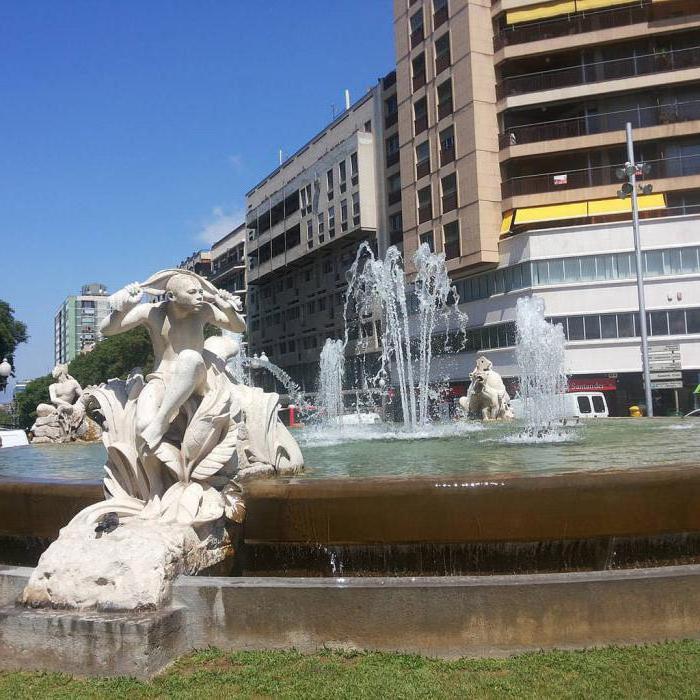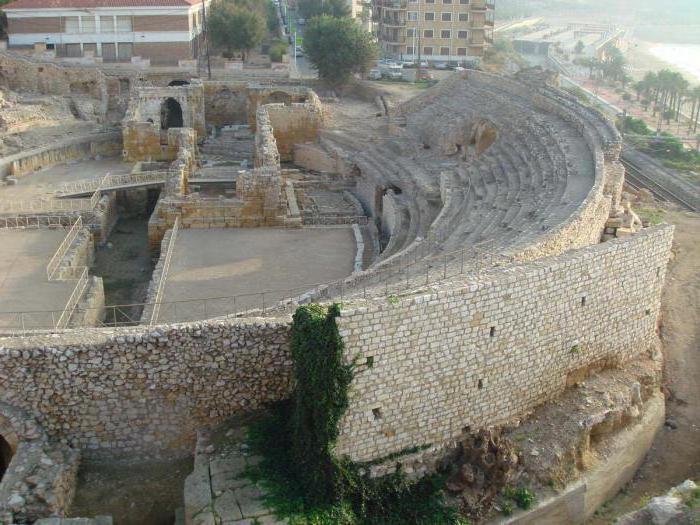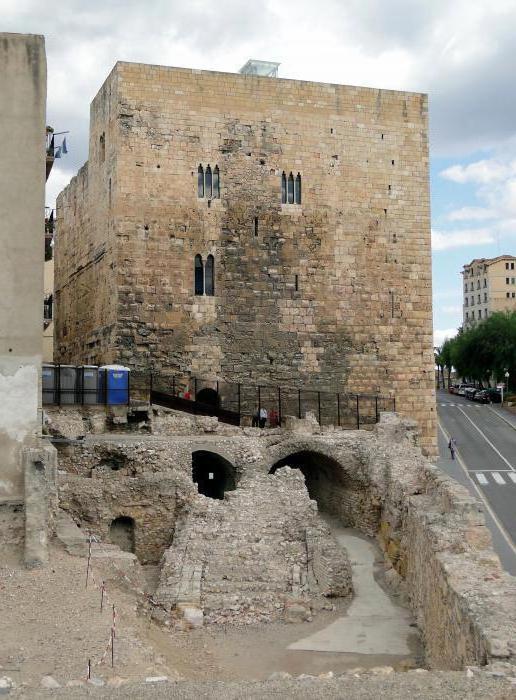Spain attracts many tourists. Tarragona is one of the most interesting cities in this country. Today it is the capital of the province of the same name located in Catalonia, a developed industrial and port city. About 150 thousand people live here. In terms of population, it is the second city in Catalonia (Spain). Tarragona was declared a cultural heritage site by UNESCO in 2000 thanks to its unique architectural ensemble, which consists of 2 parts. One of them belongs to the Middle Ages, and the other to the Roman era.
When choosing hotels in Tarragona (Spain), remember that you will come to your room only to spend the night. Indeed, in this city there are many attractions that will arouse the interest of any traveler. However, if maximum comfort is important to you, we note that Tarragona (Spain) hotels can be found for every taste and budget. For example, a vacation in Husa Imperial Tarraco (4 stars) with a swimming pool, parking, banquet hall, tennis court, snack bar will cost from 65 euros per night. One of the cheapest options is Tarragona Hostel, where you can spend the night for a little over a thousand rubles. Of course, there are fewer amenities - the bathroom is shared, dormitory rooms with 2 bunk beds. However, it is possible to use the kitchen with a refrigerator, microwave and stove and cook something tasty for yourself.
Why do tourists go to this city? After reading this article, you will find out what to see in Tarragona (Spain) is definitely worth it.
Imperial Tarraco
Today, the main tourist street of this city is the Rambla Nova, which originates on Sq. Imperial Tarraco. This square contains important government buildings, ministries, the main office of telecommunications and traffic police. In the center of it you will see a Japanese-style garden. He appeared in 1956, the author of the project was J. Lopez. Tarragona is a city that has always been a pleasant and attractive place to live. It was sung in the Roman era by Virgil, glorified by many poets and artists. Tarragona was also lucky with architects. Josep López, born here and sensitive to this city, became its chief architect in 1943. He made every effort to give Tarragona a modern look, while not damaging the historical heritage of his ancestors.
Rambla Nova
Rambla Nova, designed in 1854, is the center of the new building of Tarragona. The weather in this city is always conducive to a walk. Rambla Nova - a street with a length of 700 meters. On it you can walk to the "Mediterraneo Balcony", a viewing platform from which you will have stunning views of the port, the sea and the remains of the Roman amphitheater, perfectly preserved. Here you will also find mansions dating back to the 2nd half of the 19th century, the building of the Chamber of Commerce, houses made in the Art Nouveau style, the College of the Order of St. Teresa, as well as the Metropol Theater, which was designed by Pujol, assistant and employee of Antoni Gaudí. Of course, Rambla Nova is worth a visit in the first place if you are staying in a city like Tarragona (Spain). The photo presented above is not able to convey its beauty and the atmosphere that prevails here.
Els Castellers

This sculptural composition was created in 1999. It consists of 219 figures. Its weight is about 12 tons, and its height is 11 meters. The word "Castellers" goes back to the word "castel", which means "fortress" or "castle" in Catalan. Castellers are a group of people who form a living pyramid by climbing on top of each other. The goal is to create a structure that is as stable and tall as possible. Initially, the tradition of Castellers originated in the regions of Penedès and Tarragona. In 1770, the first Castell was recorded in Tarragona. To build it, it is necessary that each member of the group has a good balance, that he has a sense of solidarity with others, trusts his comrades and remains calm. The most successful teams to date have been able to build a tower consisting of 9 levels. This spectacle is worth visiting a country like Spain. Catalonia (Tarragona) will definitely not let you get bored.
Fountain "Centenario"

This fountain is another attraction located on the Rambla Nova. It was built by Josep Lopez, and Josep Viladomat is the creator of the sculptures that adorn the fountain. It was installed in 1954 to mark the centenary of the Rambla. Viladomat belongs to a generation of sculptors who tried to combine several stylistic trends in their works - the Catalan baroque, art nouveau and classicism of Greek sculptures. Thanks to this unusual combination, the Centenario fountain attracts the attention of many tourists.
Sculptural composition "Naked"
Otherwise it is called "Heroes of Tarragona". This composition is dedicated to the heroes who in 1811 gave their lives defending their native city from Napoleon's troops. Its creator is Julio Antonio, a sculptor who died without waiting for the opening of his work, which took place in 1931. Since Spain was a puritanical country in those days, the appearance of a composition consisting of 3 naked figures would have caused a scandal. Therefore, they decided to temporarily remove the sculpture from sight, until the question of how to install it is resolved so as not to shock the local population. Thus, the idea arose to place a screen around this composition and guards, round the clock obliged to ensure that only those who had reached the age of majority looked at the sculpture. During a visit to the city by Queen Victoria Eugenie, this amazing story ended. Considering what was happening to be absurd, she took a picture with the monument in order to make it clear that there was no reason to hide this work of art. In 1931, the queen went even further and herself pulled off the screen that covered the sculpture. Its creator, unfortunately, died without waiting for this moment, which put an end to the long controversy.
College of the Order of St. Teresa
What else can Spain (Tarragona) offer tourists? If you walk up the Rambla a little higher, you will find a neo-Gothic red brick building. This is the College of the Order of St. Teresa. It was built by Bernardo Martorell in 1926. This building consists of three parts. The central one is the most prominent. Two side towers are made in the form of towers. Two construction techniques were used in the construction of the walls. The first is a single-layer, which was used in places where it was required to obtain a uniform effect. The two-layer was used where an ornamental pattern was needed.
Metropol Theater
Josep Maria Pujol built the Metropol Theater in 1908. In 1995 it was completely renovated. If you value cultural relaxation, you should definitely visit this theater in Tarragona (Spain).
Monument to Roger de Luria

At the end of the Rambla Nova is this monument. The man to whom it is dedicated was an admiral of the Catalan fleet during the reign of Pedro II the Great. Felix Ferrer is the author of the project. The sculpture was originally planned to be installed in the Municipal Palace, but this turned out to be impossible - it turned out that it did not fit in size. In other words, it simply did not fit there, and then it was decided to put it at the end of the Rambla Nova. This is the first monument that was erected on this street after the beginning of its development.
Mediterranean Balcony
If you go out to this observation deck, you will see on the left side, in the distance, on the seashore, fortifications. This is Fort de la Reina Ana, which was garrisoned by the soldiers of Charles, Archduke of Austria. This garrison played an important role in the War of the Spanish Succession, which unfolded in 1702-1714. His task was to protect the city from the troops of Philip V, the French king. Even more to the left you will see the ruins of the Roman amphitheater, as well as part of the architectural ensemble of Tarragona, dating back to the Roman era.
city wall
The city wall is the first structure built in these places by the Romans. It is known that as early as 217 BC. e. construction was launched. The three towers date back to 197 BC. e. Until the 3rd century A.D. e. the construction of the wall continued, it reached 4 km. Only one kilometer remains today. The lower part of the wall is made of giant stone blocks. The closer to the top of it, the smaller the size of the blocks used. Since the construction was carried out without the use of cement, it was necessary to achieve a perfect fit to each other of neighboring blocks. To this day, you can see the marks on the stones that were left by groups of workers to demonstrate the amount of work they had done. Everything that is located outside the city wall is part of an architectural ensemble dating back to the Roman era.
Amphitheater

Many historical sites can be found in a country like Spain. Tarragona is a city with very interesting and ancient monuments. One of them is the Roman amphitheater. It was built at the beginning of the 2nd century AD. e. The opening of this "cultural" object brought a new stream to the life of the city. The bloody performances that unfolded here tickled the nerves and quickly found fans among the locals. It was no coincidence that the location of the amphitheater was chosen between the coast and Via Augusta, behind the city wall: it was so convenient to unload the materials that were used during the performances, as well as wild animals (tigers and lions) that were brought from Africa. On the stage, 2 types of spectacles were most often seen: battles of gladiators with animals and fights between gladiators. Later, with the beginning of the persecution of Christianity, no less bloody actions began here, but they already had a slightly different character. On January 21, 259, the first of these occurred. Then 3 people were tortured to death in the arena - the deacons Eulogius and Augurus and the Christian priest Fructus. They became the first martyrs of Tarragona. In the 6th century, a basilica was built on the site of their burning in memory of them. And in the 12th century, the church "Santa Maria del Milagro" in the form of a Latin cross was erected on its ruins. It lasted until 1915.
Circus

Since ancient times, local residents have not been deprived of entertainment. The city of Tarragona (Spain) was famous for another Roman entertainment establishment built at the end of the 1st century AD. e. Chariot races were held in the arena. The capacity of the circus was 30 thousand spectators, and its length was 350 meters, that is, it extended to Ayuntamento, the building of the current city hall. Today, the territory that once belonged to the Circus is being cleared. Only by visiting the Museum of the History of the City, you can see a part of it. And it is certainly worth doing this if you are staying in a city like Tarragona (Spain). Reviews about visiting this museum are always positive. Let's talk about it in more detail.
City History Museum
The main part of it is in a tower-shaped building, which the Catalans call Pilate's palace. It was built by the Romans and connected to the Circus in ancient times. According to some versions, it was here that Pontius Pilate was born, whose son became praetor Tarraco. This impressive building was used for various purposes during the Middle Ages. At one time it was a prison. Then it served as the residence of the princes of Tarragona and the kings of Aragon. During the war with Napoleon, the tower was used as a military fortification and was badly damaged. Today it houses the Museum of the History of the City. It presents unique exhibits that belong to both the Middle Ages and the Roman period.

If you are tired of sightseeing, we note that Tarragona (Spain) is not only famous for them. The beaches here are sandy, wide, with a long gentle entrance and fine golden sand. Of course, Tarragona is a great place where you can combine a beach holiday with sightseeing. We only talked about the main ones, there are many other interesting places in this city, so you definitely won’t be bored here.
